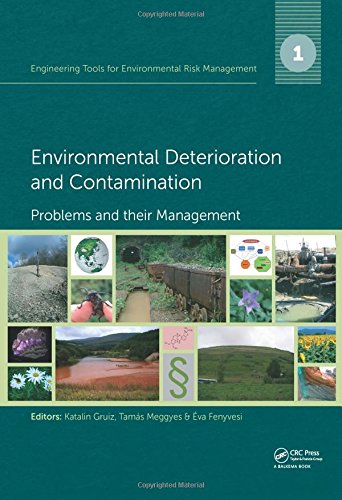

Most ebook files are in PDF format, so you can easily read them using various software such as Foxit Reader or directly on the Google Chrome browser.
Some ebook files are released by publishers in other formats such as .awz, .mobi, .epub, .fb2, etc. You may need to install specific software to read these formats on mobile/PC, such as Calibre.
Please read the tutorial at this link: https://ebookbell.com/faq
We offer FREE conversion to the popular formats you request; however, this may take some time. Therefore, right after payment, please email us, and we will try to provide the service as quickly as possible.
For some exceptional file formats or broken links (if any), please refrain from opening any disputes. Instead, email us first, and we will try to assist within a maximum of 6 hours.
EbookBell Team

4.7
46 reviewsThis is the first volume of the five-volume book series “Engineering Tools for Environmental Risk Management”, dealing with the following topics:
• types and management of environmental deterioration, particularly pollution;
• environmental toxicology as a versatile tool in monitoring and risk management;
• risk assessment of chemical substances and contaminated land;
• risk reduction measures, focusing on bio- and ecotechnologies;
• case studies demonstrating the interaction between regulation, management and engineering and the individual application of engineering tools.
The book series focuses on the state of knowledge concerning the environment and its conscious and structured application in environmental engineering, management, decision making and legislation. This first volume provides an overview of the behavior and function of the healthy environment and the capacity of the ecosystem to serve mankind and to compensate for adverse changes. The prime causes of these changes are production and use of chemical substances, abandoned and contaminated land, intensive agriculture, mining and the complex problem of waste.
The first volume establishes the foundation of the holistic approach used in a progressive environmental protection by:
• striking a balance between nature’s needs and engineering capabilities;
• understanding the interaction between regulation, management and engineering;
• applying novel technologies and innovative scientifi c and engineering tools.
The aggregated information and knowledge disseminated in this volume provides a broad perspective for engineers to adjust their tools to the best management practices and for managers and decision makers to fi nd synergy between their goals and existing engineering solutions.
This book series focuses on the state of knowledge about the environment and its conscious and structured application in environmental engineering, management and decision making.